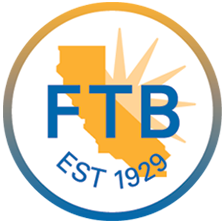
With the end of the year approaching, it’s time to consider some smart tax-saving strategies. One of the key things you should consider is whether to take the standard deduction or itemize deductions. Since the 2024 standard deduction amounts are high for 2024, you may not itemize. Plus, under current law, many itemized deductions have been reduced or suspended. Given these points, we’ve put together a mini guide to help you with your year-end tax savings for 2024.
Year-End Tax Savings Moves to Consider for 2024
Here are some effective planning tips to maximize your year-end tax savings for 2024.
1. Maximize Retirement
401(k) Contributions
Contribute as much as possible to your 401(k) before the year ends. For 2024, the limit is $23,000 for individuals under 50 and $30,500 for those 50 and older. Contributions to traditional 401(k)s are made pre-tax, reducing your taxable income.
IRA Contributions
If you have an Individual Retirement Account (IRA), consider making the maximum contribution. The limit for 2024 is $6,500 ($7,500 for those 50+). Contributions to a traditional IRA may be tax-deductible, depending on your income and filing status.
2. Use Tax-Loss Harvesting
Offset Capital Gains
If you have investments with losses, consider selling them to offset capital gains. Tax-loss harvesting allows you to reduce your tax bill by offsetting gains with losses.
Limit on Loss Deductions
If your losses exceed gains, you can deduct up to $3,000 of the excess losses against other income. Any remaining losses can be carried forward to future tax years
3. Make Charitable Donations
Cash Contributions
Donations made to qualified charities are deductible if you itemize. Consider “bunching” contributions, where you give multiple years’ worth of donations in a single year to reach the standard deduction threshold. This year-end tax tip can provide savings that you haven’t considered for 2024.
Donor-Advised Funds (DAFs)
If you’re uncertain about which charities to support, consider donating to a DAF, which allows you to take the tax deduction now and decide on the beneficiaries later.
4. Take Advantage of Tax Credits
Residential Clean Energy Credit
For those investing in renewable energy, a credit of 30% is available for eligible home solar, geothermal, or battery storage systems installed in 2024.
Child and Dependent Care Credit
Families with qualifying childcare expenses can claim a credit for a portion of those costs. Ensure you’ve maximized these credits for 2024 if eligible.
5. Defer Income and Accelerate Deductions
Delay Income
If you’re able to control the timing of your income, consider deferring it into 2025. For example, small business owners can delay client invoices, or self-employed individuals may postpone jobs.
Accelerate Deductions
If you itemize deductions, consider prepaying certain deductible expenses like medical expenses or state and local taxes, if possible, before the end of the year.
6. Review Health Savings Accounts (HSAs) and Flexible Spending Accounts (FSAs)
Max Out HSA Contributions
If you have a high-deductible health plan, you can contribute up to $3,850 for self-only coverage or $7,750 for family coverage in 2024, with an additional $1,000 catch-up for those 55 and older.
Use FSA Funds
FSA contributions typically must be spent by year-end (or within a grace period), so check your balance and plan expenses accordingly.
7. Consider a Roth IRA Conversion
Convert Traditional IRA to Roth IRA
If you’re in a lower tax bracket this year, a Roth conversion may be beneficial. You’ll pay taxes on the conversion now, but future withdrawals can be tax-free. This move is ideal if you expect to be in a higher tax bracket in retirement.
8. Utilize the Gift Tax Exclusion
Annual Gift Tax
The exclusion for 2024 allows you to give up to $17,000 per person without incurring gift tax. This is a great strategy for those looking to pass wealth to heirs without affecting estate taxes.
9. Plan for Required Minimum Distributions (RMDs)
RMD Changes
If you’re over 73, ensure you take your RMDs from retirement accounts to avoid penalties. Qualified Charitable Distributions (QCDs) allow those 70½ or older to donate up to $100,000 directly from an IRA to a charity, satisfying RMDs while reducing taxable income.
10. Review Your Withholding and Estimated Taxes
Avoid Penalties
If you’ve had a high-income year, adjust your withholdings or make an estimated tax payment by year-end to avoid penalties. This is particularly important for those with significant investment or freelance income.
Final Thoughts
With so many changes in-play, planning ahead to ensure you’re not missing out on year-end tax savings for 2024 can yield significant benefits. Whether it’s maximizing contributions, taking advantage of credits, or offsetting gains, these strategies can help you enter 2025 with a lighter tax bill. Consult our tax professionals to tailor these strategies to your unique circumstances.







